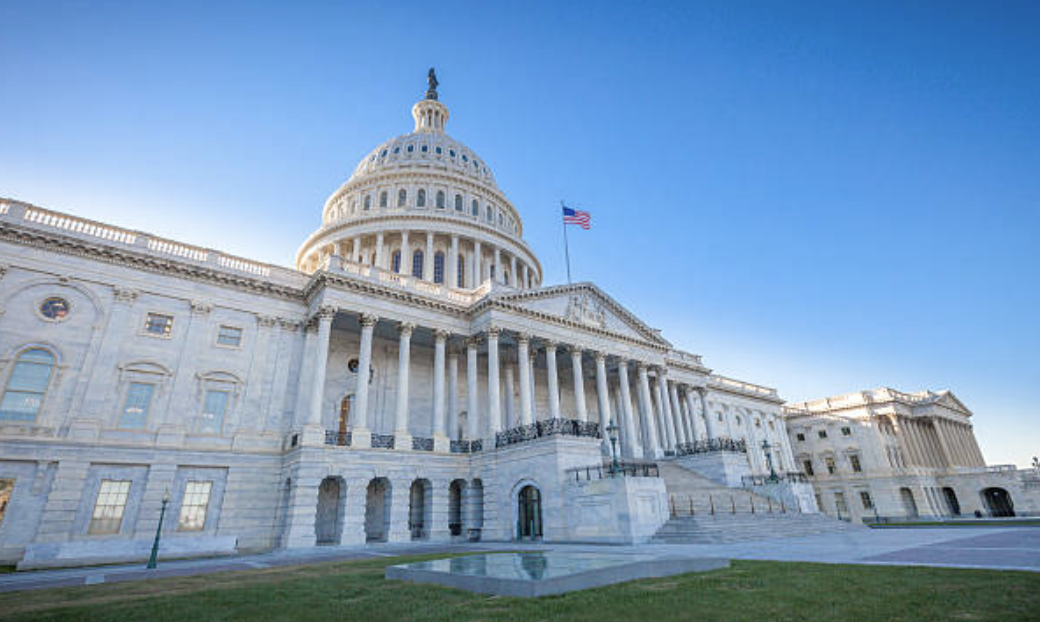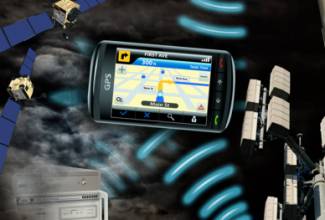There was a flurry of filings July 9 just as the window closed for public comment on Ligado Networks’ proposal to repurpose satellite frequencies for a terrestrial network — a plan with the potential to interfere with GPS receivers.
The comments emerged as speculation swirled around a July 3 bid by EchoStar for Ligado spectrum supplier INMARSAT. The bid was rejected and, as of press time, EchoStar will have to wait six months before trying again.
That doesn’t mean the game is up. INMARSAT holds the licenses for L-band spectrum that Ligado has a contract to use. Investment analysts have been speculating that Charlie Ergen, the telecommunications powerhouse behind both EchoStar and the Dish Network, will use Dish to try again to buy INMARSAT.
His objective likely has to do with spectrum and not corporate synergies, surmised a bevy of industry watchers. Experts at Quality Analytics suggested Ergen could be trying to protect the value of his firms’ current spectrum holdings from being driven south by a sudden influx into the market of L-Band frequencies. A deal for INMARSAT could also give Ergen more leverage with Ligado. Ligado has long been suspected of being more interested in selling its frequencies than building a network and Ergen tried to gain control of Ligado’s L-Band spectrum during the bankruptcy of its predecessor firm LightSquared.
Final Pitch
Meanwhile Ligado’s plans remain mired at the Federal Communications Commission (FCC) where the argument continues over whether the proposed ground network will cause widespread interference to GPS. In its July 9 comments Ligado asserted it had addressed those concerns.
Ligado underscored that a month earlier it asked the FCC to cap at 9.8 dBW (10 Watts) the power at its proposed terrestrial base stations operating in the 1526-1536 MHz band (“Lower Downlink Band”.) This, the firm said, was a reduction of more than 99.3% from the nominal 32 dBW EIRP maximum set forth in its earlier applications to build a ground-based network.
The change, the company wrote in the May 31 request, is “consistent with” the Department of Transportation’s (DOT’s) Global Positioning System Adjacent Band Compatibility Assessment (ABC Assessment) and “benefits not only certified aviation devices, but all GPS receivers.”
“The (power reduction) Amendment assures protection for certified aviation GPS receivers as well as all other GPS receivers,” the company wrote in its July 9 comments. “This conclusion is supported by the certified aviation recommendations of the DOT Report, Ligado’s coexistence agreements with major GPS manufacturers and thousands of hours of empirical testing, all of which evidence that all other classes of GPS devices will not be adversely affected by Ligado’s revised operational parameters.”
It is worth noting the carefully worded assertion that “all other classes” of GPS devices will not be adversely affected — as opposed to saying all GPS receivers will be unaffected. Lidago’s own tests indicate there could be issues.
So, to ease opposition the firm offered in its filing to repair or replace any impacted government receivers. It is unclear what will be available for the millions of non-government users. Among those seemingly left out are several million commercial and hobbyist drone pilots now operating in the U.S. The smaller drones favored by these groups do not use certified aviation receivers.
Push to Change the Rules
The “empirical testing” Ligado referred to are studies done by Roberson and Associates and the National Advanced Spectrum and Communications Test Network (NASCTN). Ligado sponsored those studies and, in the case of NASCTN, helped frame the research itself.
The tests, however, did not meet the minimum criteria to be useful for judging interference according to the National Space-Based PNT Systems Engineering Forum (NPEF), a panel of technical experts drawn from more than a dozen agencies. The NPEF report was released in March by the nation’s leading GPS policy body — the National Executive Committee (ExCom) for Space-Based Positioning, Navigation, and Timing (PNT). It was the ExCom that requested the NPEF study.
The NPEF team found the scope and framework of the Roberson and NASCTN tests were insufficient when evaluated against a set of minimum criteria. A key element in that criteria was the use of the globally accepted 1 dB degradation Interference Protection Criterion (IPC) — that is problematic interference exists when there is a one-decibel (1 dB) decrease in C/N0, the carrier-to-noise power density ratio.
Ligado has been seeking to redefine the yardstick for determining interference to a much more favorable metric: a change in positioning and timing accuracy as experienced by the user. They laid out what was at stake in getting the FCC to adopt their approach over the internationally-accepted 1 dB IPC standard — hinting at the possibility of a fight over compensation and asserting that a decision in favor of the 1 dB standard could undermine sharing in other bands aimed at supporting 5G telecom applications.
Sticking with the 1 dB IPC standard would “preclude Ligado’s use of this spectrum in a manner consistent with its existing ATC authorization,” the firm wrote, adding in a footnote that “use of the IPC would destroy any commercial utility of the Lower Downlink Band, constructively nullifying Ligado’s authorization to use of the spectrum without affording Ligado the required administrative procedures or compensation.”
Ligado then asserted there was more at stake than just the fate of its network proposal. “Use of the IPC would be inconsistent with spectrum regulations,” the Ligado team wrote, and “also would block use of spectrum adjacent to GNSS on either side of the allocation for more than 60 megahertz for any commercial purpose, and imperil spectrum identified in the Spectrum Pipeline Act of 2015.”
In response to a question from Inside GNSS, Ligado said it was referring to uses for 5G applications. The firm explained in a footnote that using the 1 dB IPC standard could limit the use of the 1300-1370 MHz band, which is under study for use for terrestrial wireless service. “This “Pipeline Spectrum” could enable the commercial wireless sector to expand into additional spectrum and provide additional service,” the firm said.
“The Commission is considering authorizing use of the Galileo GNSS system in the U.S., including one signal at 1260-1300 MHz, directly adjacent to the Pipeline Spectrum,” Ligado wrote. “Transposing DOT’s application of the 1 dB standard to the L-band to Galileo, if spectrum regulators use the 1 dB metric to protect Galileo, it will render substantial portions of the Pipeline Spectrum essentially unusable.”
GPS Manufacturers Say ‘No’
Ligado’s assertion that impacts to receiver accuracy are the better yardstick for measuring interference has been rejected by the Air Force, which runs the GPS system; the DOT, which did the ABC Assessment and relies on GPS to support air, rail and other systems; and the National Space-Based Positioning, Navigation, and Timing Advisory Board (PNTAB), the nation’s leading satellite navigation experts. The PNTAB set the minimal criteria used by the NPEF to assess NASCTN, Roberson and three government studies.
Perhaps as importantly from a policy-making perspective, Ligado’s position in favor of using accuracy impacts — so called key performance indicators (KPIs) — has been rejected by the three GPS manufacturers Ligado settled a $1.9 billion lawsuit with in 2015.
Ligado has repeatedly pointed to its deals with GPS receiver manufacturers as evidence that it’s worked out interference issues with the GPS community as a whole.
“The agreements with the major GPS device manufacturers, along with the thousands of hours of testing, show that GPS devices will not experience harmful interference as a result of Ligado’s revised power and out of band emissions levels,” the firm said in its July 9 comments.
That same day Trimble Navigation, John Deere and Garmin told the FCC that, while they had agreed not to oppose Ligado’s terrestrial plan as long as certain criteria were met, their agreements did not include backing Ligado’s KPI-based interference standard.
Deere said “its position with respect to Ligado’s Amended Modification Applications must not be interpreted as acquiescence in, or in any way agreement with, Ligado’s continued efforts to depart from long-accepted practice and establish a new metric for determining potential harm to GPS and other GNSS systems based on Key Performance Indicators (“KPIs”). Deere does not agree with this approach and reaffirms its staunch support for application of a one (1) dB decrease in Carrier-to-Noise Power Density (“C/N0”) (the “1 dB standard”) as the appropriate metric for determining whether a GPS receiver has experienced harmful interference.”
“No empirical, universal and quantifiable alternative to the 1 dB standard exists for evaluating harmful interference into a GPS/GNSS service,” wrote Deere. The firm deemed the Roberson and Associates and NASTCN tests “deeply flawed,” because they used KPIs — which Deere called inherently subjective and unreliable — to evaluate interference.
“Reliance on KPIs fails to fully account for the four principal attributes of GPS/GNSS — accuracy, integrity, continuity and availability,” said Deere, “and (does) not account for the wide diversity of GPS receivers and use cases. Given the tremendous diversity in GPS/GNSS receiver design and use models, even the broadest, most inclusive test program cannot credibly claim to have harmonized and evaluated end user outputs in a meaningful way against a potentially interfering signal.”
Garmin agreed saying the “use of any alternative measure based on only user experience will fail to consider the vast number of devices, uses, and environments in which GPS devices are deployed.” It also pointed out that its decision not to oppose Ligado’s plans was based in part on its testing using the 1 dB standard.
The firm said it “negotiated specified periods with reduced power levels to permit time for design of hardened receivers that will be able to tolerate interference at the levels specified in the settlement agreements. That design change process is ongoing and is itself based on ensuring that GPS products are not degraded by more than 1 dB C/N0 in the presence of Ligado signals. Garmin does not oppose the Ligado Modification Applications precisely because it has used the 1 dB metric to evaluate its own devices and, on that basis, negotiated the transition period provisions in the agreement.”
Trimble said the FCC should dismiss Ligado’s calls for rejection of the long-established 1 dB standard and the proposed alternative use of KPIs.
“The 1 dB standard has been consistently applied in a variety of spectrum contexts,” wrote Trimble, “but nowhere is it more appropriate than in the context of interference with GPS devices, which receive signals on Earth below the noise floor and where every dB counts in many mission critical applications. Ligado’s anecdotal attack provides no basis for abandoning this longstanding U.S. and international standard of harmful interference.”
Dee Ann Divis has covered GNSS and the aerospace industry since the early 1990s, writing for Jane’s International Defense Review, the Los Angeles Times, AeroSpace Daily and other publications. She was the science and technology editor at United Press International for five years, leaving for a year to attend the Massachusetts Institute of Technology as a Knight Science Journalism Fellow.






